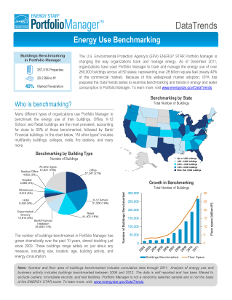EPA upgrades online energy management and tracking tool
The Environmental Protection Agency recently upgraded its online energy management and tracking tool, EnergyStar Portfolio Manager, which is used to measure energy performance.

|
The Environmental Protection Agency recently upgraded its online energy management and tracking tool, Energy Star Portfolio Manager, which is used to measure energy performance, water use, utility costs and greenhouse gas emissions for more than 40% of the country’s commercial buildings space, including school districts, retail chains, hospital systems and local governments. The new Energy Star Portfolio Manager delivers a more user-friendly interface, enhanced data sharing capabilities, better reporting, and for the first time, the ability to manage buildings across their lifecycle from design through occupancy.
“You can’t manage what you don’t measure,” said Janet McCabe, principal deputy assistant administrator for the Office of Air and Radiation. “The new ‘turbo-charged’ Portfolio Manager makes it easier than ever for building owners and managers to make strategic business decisions that are good for the environment and good for the bottom line. Consistent with President Obama’s Climate Action Plan, this tool helps businesses cut wasted energy, reduce harmful carbon pollution, and save money.”
The tool will continue to deliver the nearly 150 energy, greenhouse gas (GHG) and water performance metrics that owners and managers of commercial buildings use to make strategic management decisions. One of these metrics — the 1–100 Energy Star score — rates a building’s energy efficiency against similar buildings nationwide.
A score of 50 represents median energy performance, whereas a score of 75 signifies that a building outperforms 75% of its peers. Buildings in the United States that score a 75 or higher, and have their data verified by a professional engineer or registered architect, are eligible to earn EPA’s Energy Star certification [www.energystar.gov].
Energy Star-certified buildings use, on average, 35% less energy and generate 35% fewer GHG emissions than typical buildings, according to the EPA. Studies have shown that they have lower operating costs, increased asset value and higher occupancy rates.
Additionally, there are benefits to simply measuring and tracking a building’s energy performance in Portfolio Manager. A recent EPA study showed that buildings that benchmarked consistently over a three-year period logged an average energy use reduction of 2.4% each year. For commercial building portfolios with annual energy bills in the millions of dollars and that emit tens of thousands of metric tons of GHG emissions each year, these reductions can be substantial.
Looking for a reprint of this article?
From high-res PDFs to custom plaques, order your copy today!






